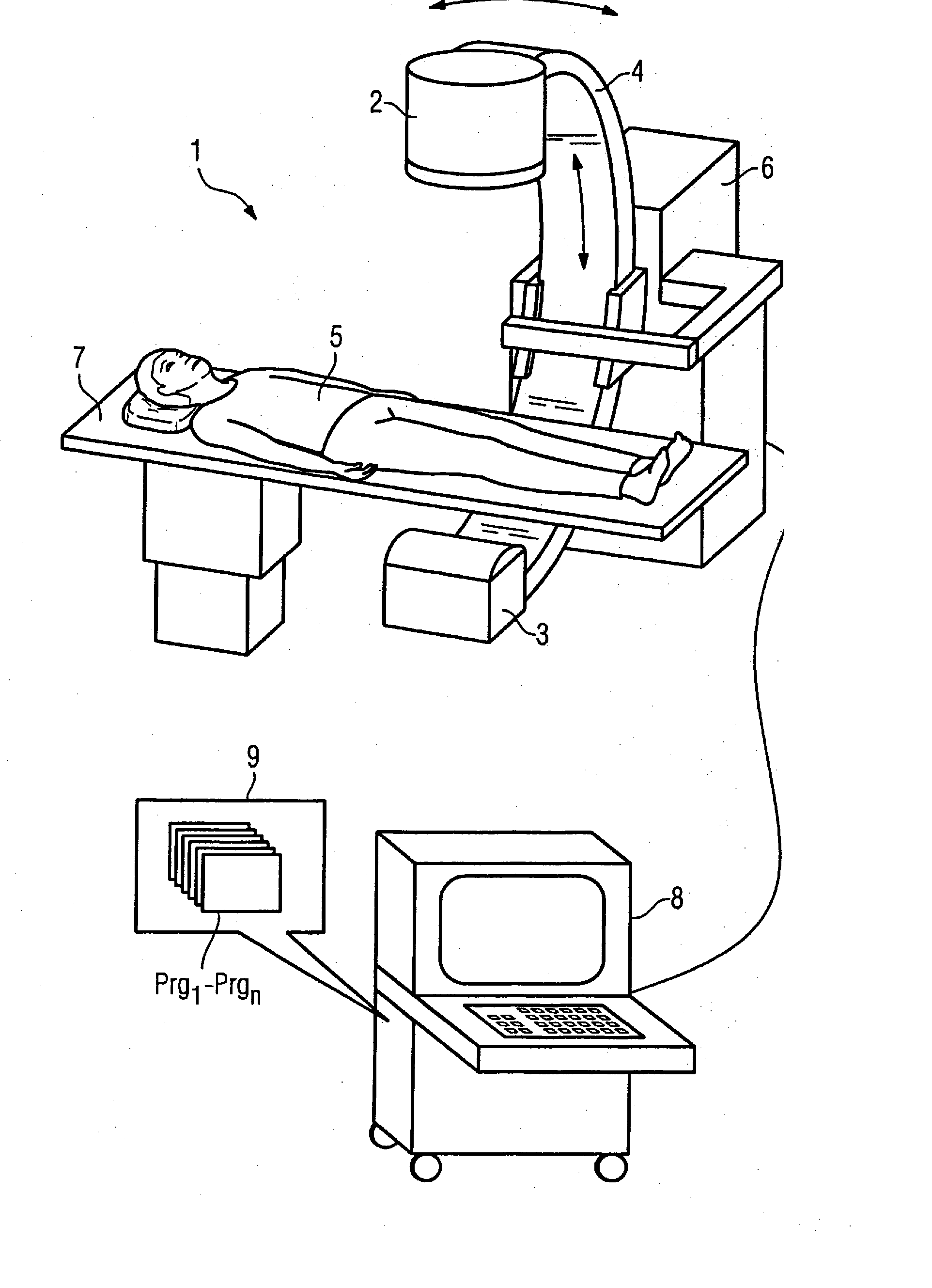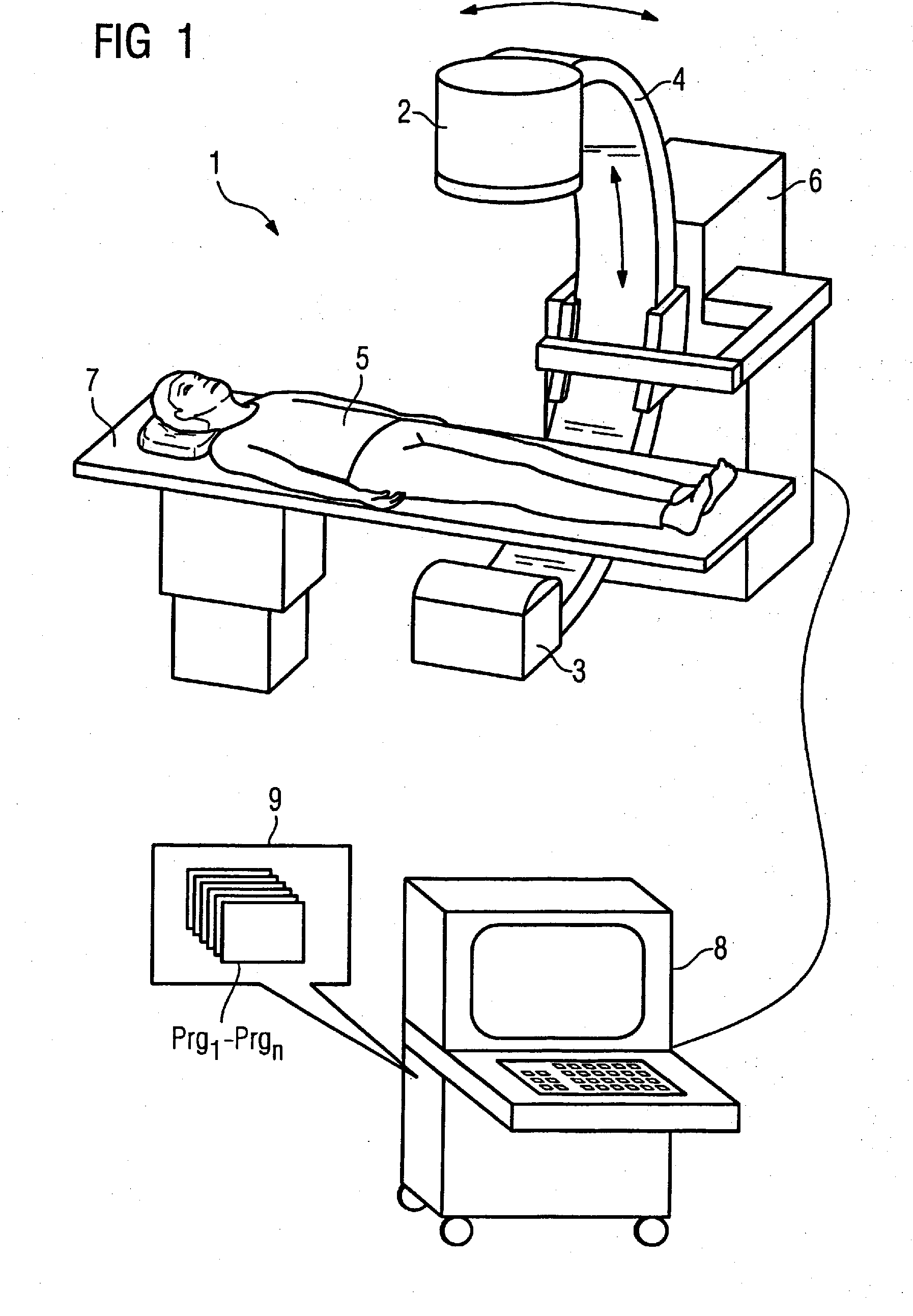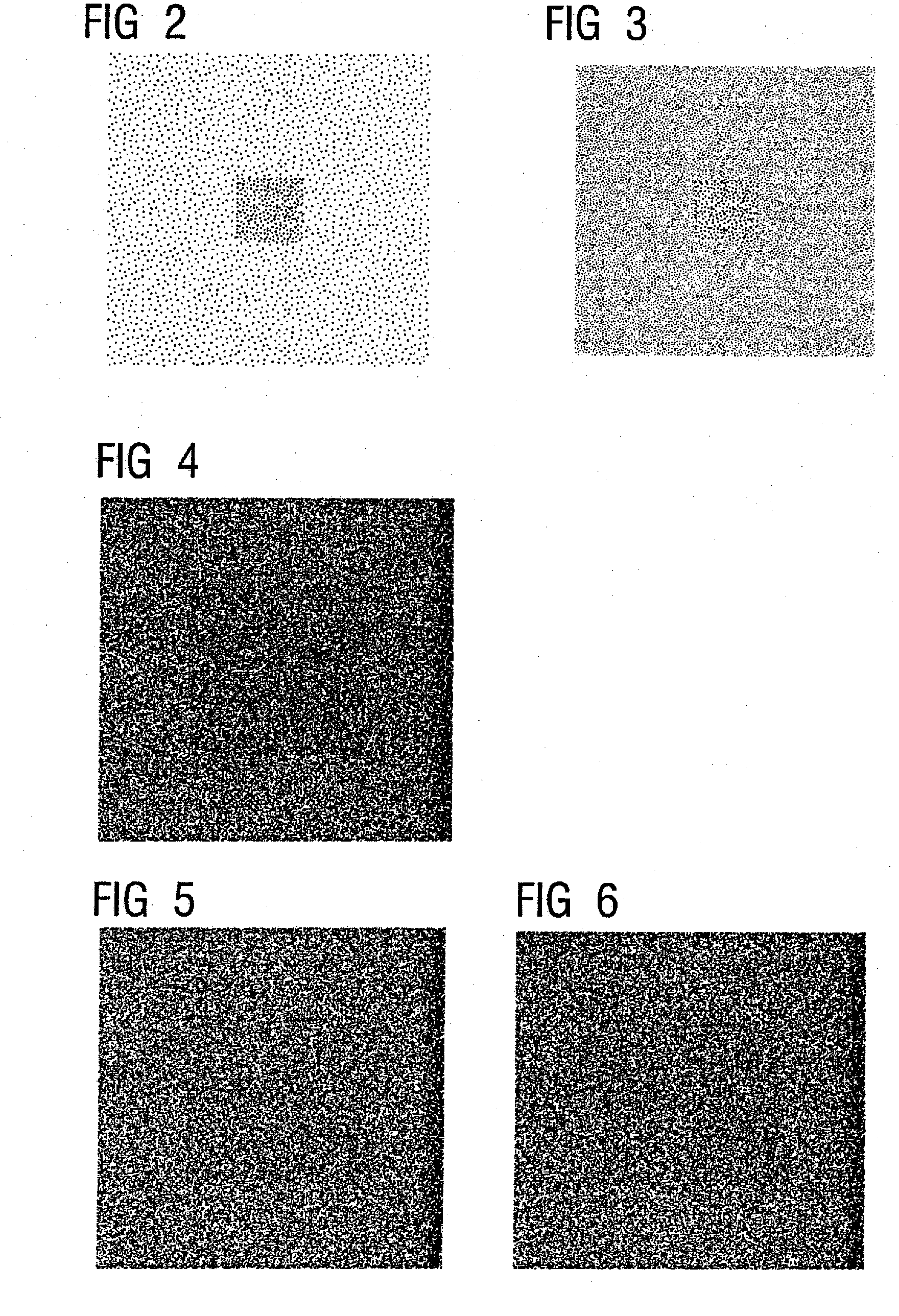Scatter radiation correction in radiography and computed tomography employing flat panel detector
a detector and scatter radiation technology, applied in the field of scatter radiation correction in radiography and computed tomography with flat panel detectors, can solve the problems of contrast loss, quantitative distortion, significant problem of scatter radiation (which contains only very little image information), etc., and achieve the effect of worsening the signal-to-noise ratio
- Summary
- Abstract
- Description
- Claims
- Application Information
AI Technical Summary
Benefits of technology
Problems solved by technology
Method used
Image
Examples
Embodiment Construction
[0145]FIG. 1 illustrates a C-arm system 1 with which projective and tomographical x-ray exposures can be generated. It has a C-arm 4 attached to a housing 6, the C-arm 4 being movable around a patient 5. An x-ray tube 2 is arranged at one end of the C-arm 4 and a flat detector (FPD) 3 is arranged at the other end of the C-arm 4. The patient 5 is located on a movable patient bed 7, such that the patient 5 and a region thereof to be examined can be moved into the measurement field between the x-ray tube 2 and the detector 3 of the C-arm system 1. A control and computation unit 8 with a memory 9 in which corresponding control and image processing programs Prg1-Prgn can run as needed is used for control of the system 1. Program code for implementation of the inventive method is also stored in the memory 9, such that the scatter radiation occurring in the system can be corrected.
[0146] The following illustrations of FIG. 2-17 are based on simulation calculations, whereby a simulation su...
PUM
 Login to View More
Login to View More Abstract
Description
Claims
Application Information
 Login to View More
Login to View More - R&D
- Intellectual Property
- Life Sciences
- Materials
- Tech Scout
- Unparalleled Data Quality
- Higher Quality Content
- 60% Fewer Hallucinations
Browse by: Latest US Patents, China's latest patents, Technical Efficacy Thesaurus, Application Domain, Technology Topic, Popular Technical Reports.
© 2025 PatSnap. All rights reserved.Legal|Privacy policy|Modern Slavery Act Transparency Statement|Sitemap|About US| Contact US: help@patsnap.com



